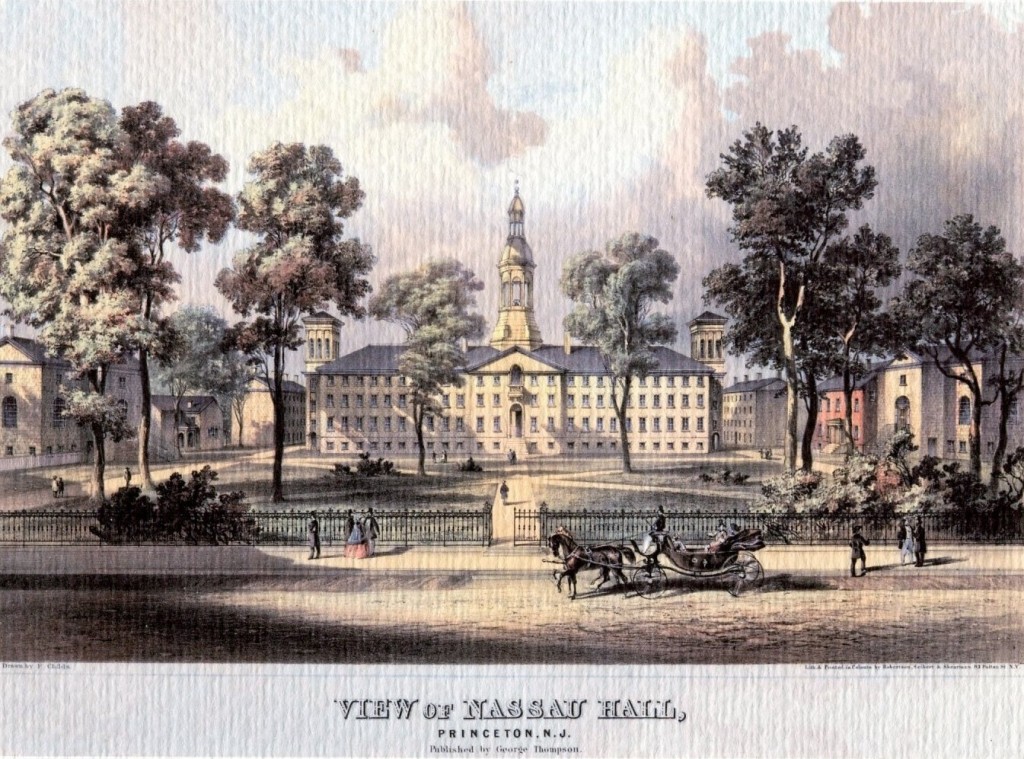-
This Week in Princeton History for July 12-18
In this week’s installment of our recurring series bringing you the history of Princeton University and its faculty, students, and alumni, two juniors evacuate their summer program abroad when war breaks out, word is spreading about a ban on secret societies, and more. July 13, 1895—Native Americans are rumored to have raided a party of…
-
How Bicycles Changed Princeton, 1860s-1910s
Bicycles are seemingly ubiquitous at and around Princeton University in our time. The ever-present sight of bicycles parked near campus buildings or cyclists making their way across campus or along the D & R Canal raises no eyebrows; their absence, as with the absence of other forms of traffic, was one of the most noteworthy…
-
This Week in Princeton History for July 5-11
In this week’s installment of our recurring series bringing you the history of Princeton University and its faculty, students, and alumni, staffing levels force the U-Store to close for one hour each day, the CIA notes payments have been sent to researchers involved in secret experiments, and more. July 5, 1945—Due to “depleted staff,” the…
-
This Week in Princeton History for June 28-July 4
In this week’s installment of our recurring series bringing you the history of Princeton University and its faculty, students, and alumni, a London magazine notes the impact of Prohibition on Princetonians, Yale offers condolences on the death of a rising senior, and more. June 29, 1869—The American Whig Society celebrates its centennial. July 2, 1927—The…
-
A Princeton-Area Nazi Boys Camp and Civil Liberties in New Jersey in the 1930s
The people of Princeton were on edge one summer in 1934. Six miles away on the banks of the Delaware & Raritan Canal in Griggstown, 200 boys ranging in age between 8 and 16 from New York, Buffalo, and Philadelphia were camping in tents that bore swastika emblems, wearing uniforms apparently modeled on the “Brown…
-
This Week in Princeton History for June 21-27
In this week’s installment of our recurring series bringing you the history of Princeton University and its faculty, students, and alumni, sophomores host the first big dance, newly unionized staff receive double-digit-percentage pay increases, and more. June 21, 1877—Princetonians experience their first official big dance on campus. The Sophomore Reception, hosted by the Class of…
-
This Week in Princeton History for June 14-20
In this week’s installment of our recurring series bringing you the history of Princeton University and its faculty, students, and alumni, the Mills Tariff Bill is debated, the Prince offers a guide to “scarce” women’s restrooms, and more. June 14, 1928—A member of the Class of 1913 is struck by lightning and dies just before joining…
-
“Wear ’Em”: Princeton University’s First Gay Jeans Day

The events of October 11, 1989, Princeton’s first “Gay Jeans Day,” reverberated far beyond the confines of a 24-hour period. Both then and much later, the day highlighted attitudes among students and alumni toward the LGBTQIA+ community as they existed in the late 1980s. The Princeton LGBTQIA+ Oral History Project (AC465) further gives us insight…
-
This Week in Princeton History for June 7-13
In this week’s installment of our recurring series bringing you the history of Princeton University and its faculty, students, and alumni, members of the Class of 1875 refuse masters degrees, a member of the “Old Guard” complains about the presence of women, and more. June 7, 1794—Catherine Bullock, age 22, niece of the Morgans who…
-
This Week in Princeton History for May 31-June 6
In this week’s installment of our recurring series bringing you the history of Princeton University and its faculty, students, and alumni, the installation of a sculpture brings unexpected tragedy, the Dean of the College expresses his thoughts on the impact of the Great Depression on graduating seniors, and more. May 31, 1998—To celebrate the 25th…
Princeton University Library
University Archives
